Photographs: Reuters
December 7 remains a "date that will live in infamy". On this day, 70 years ago the Japanese launched a surprise attack on United States naval base at Pearl Harbour, Hawaii killing more than 2,000 Americans. The US "sleeping giant" was awakened by Japan and the then US President Franklin Roosevelt declared war against its attacker, changing the course of World War II.
A look back in history about how the events unfolded.
What was the Pearl Harbour attack?
On the morning of December 7, 1941, the Imperial Japanese Navy launched a surprise military strike against the United States naval base at Pearl Harbour, Hawaii.
At 0755 local time the first wave of between 50 and 150 planes struck the naval base for 35 minutes causing several fires and "untold damage" to the Pacific Fleet. The Japanese squadrons dropped high-explosive and incendiary bombs.
A second strike followed at about 0900 when a force of at least 100 planes pounded the base for an hour.
Compiled by Gauri Ghadi
...
70 years ago: How Pearl Harbour changed the world
Image: A view of the USS ARIZONA burning after the Japanese attack on Pearl Harbour in Hawaii December 7, 1941Photographs: Reuters
Why did Japan attack the US?
The attack was intended as a preventive action in order to keep the US Pacific Fleet from interfering with military actions the Empire of Japan was planning in Southeast Asia against overseas territories of the United Kingdom, the Netherlands, and the US.
What was the damage caused by the attack?
Pearl Harbour was attacked by 353 Japanese fighters, bombers and torpedo planes in two waves, launched from six aircraft carriers. Two hours of bombing left 2,402 Americans dead and 1,282 wounded. All eight US Navy battleships were damaged, of which four sunk. One hundred eighty-eight US aircraft, three cruisers, three destroyers, an anti-aircraft training ship and one minelayer were destroyed.
The attacks killed fewer than 100 Japanese and they lost 29 aircraft and five midget submarines.
Japan's plan was to strike the US navy's all-important aircraft carriers but they were at sea on December 7.
70 years ago: How Pearl Harbour changed the world
Image: Captain Homer N Wallin, a Vice Admiral in the United States Navy, supervises salvage operations aboard USS California, early 1942How did Japan prepare for the attack?
On November 26, 1941, the Japanese attack force led by Vice Admiral Chuichi Nagumo left Etorofu Island in the Kurils located in northeast of Japan and began its 3,000-mile journey across the Pacific Ocean.
After a week and a half at sea, the Japanese managed to sneak six aircraft carriers, nine destroyers, two battleships, two heavy cruisers, one light cruiser, and three submarines across the Pacific Ocean and made it safely to their destination about 230 miles north of the Hawaiian island of Oahu.
At 0600 local time, the Japanese aircraft carriers began launching their planes amid rough sea and after 1 hour 15 minutes launched the first wave of the attack.
70 years ago: How Pearl Harbour changed the world
Image: A family reads an inscription by President Franklin Delano Roosevelt on the bombing of Pearl HarbourPhotographs: Getty Images
How did United States react to the attack?
The attack sent shockwaves throughout the US and led to America's entry in World War II and decisively changed its course.
On December 8, the day after the attack, Franklin D Roosevelt, the then US President, in an address to the Congress declared that December 7, 1941 was "a date that will live in infamy."
At the end of the speech, Roosevelt asked the Congress to declare war on Japan. There was just one dissenting vote that by Representative Jeannette Rankin from Montana. There was no stopping the US that declared a war on Japan.
70 years ago: How Pearl Harbour changed the world
Image: Lois Deininger of San Francisco watches her father, Pearl Harbor survivor, Edward Gaulrapp of Freeport Illinois, salute during the commemoration marking the 66th anniversary of Pearl Harbour attackPhotographs: Getty Images
Why did Germany, Italy back Japan?
On December 11, 1941 Germany and Italy declared war on the US honouring their commitments under the Tripartite Pact -- an agreement between Germany, Italy and Japan signed in September 1940, which had the principal objective of limiting US intervention in any conflicts involving the three nations.
How did Britain react to the attack?
Nine hours before the US declared a war on Japan, the Britain entered the battlefield because of the Japanese attacks on Malaya, Singapore and Hong Kong. Also, British Prime Minister Winston Churchill had promised to declare war "within the hour" of a Japanese attack on the US.
After 1941, the leaders of the British Commonwealth (Australia, New Zealand, Canada and Union of South Africa), the Union of Soviet Socialist Republics, and the United States, known as the "Big Three", held leadership of the allied powers. China was also a major ally.
70 years ago: How Pearl Harbour changed the world
Image: Zenji Abe, a Japanese pilot who attacked Pearl Harbor on December 7 1941, pays respects at the memorial wall at the USS ArizonaPhotographs: Reuters
Did Japan really plan a surprise attack on the US?
Isoroku Yamamoto, the Imperial Navy's commander-in-chief, had first instructed that the attack should commence only 30 minutes after Japan had informed the US that peace negotiations were at an end. But the attack began before the notice was delivered. Tokyo transmitted the 5,000-word notification -- the 14-Part message -- to the Japanese embassy in Washington, but transcribing the message took too long for the Japanese ambassador to deliver it in time.
However, the concluding part of the message did not declare war or severe diplomatic ties with the US. According to the US government, it only indicated that a war may break out.
A declaration of war, as it is referred to, was printed on the front page of Japan's newspapers in the evening edition of December 8, but not delivered to the US.
70 years ago: How Pearl Harbour changed the world
Image: Smoke billows 20,000 feet above Hiroshima following the explosion of the first atomic bomb to be used in warfare in this US Air Force handout photo dated August 6, 1945Photographs: Reuters
What was the aftermath of the Pearl Harbour attack?
During the final stages of World War II in 1945, the US intensely fire-bombed 67 Japanese cities. In an ultimatum, which Japan paid no heed to, the US along with Britain and the Republic of China called for a surrender of Japan in the Potsdam Declaration on July 26, 1945. Following this Harry S Truman, the then US President, ordered the US to drop the nuclear weapon 'Little Boy' on Hiroshima on August 6, 1945 followed by the detonation of 'Fat Man' over Nagasaki on August 9.
Within four months of the bombing, around 166,000 people were killed in Hiroshima and 80,000 in Nagasaki.
After Hiroshima, President Truman threatened "a rain of ruin from the air the like of which has never been seen on this earth" if Japan did not surrender.
Six days after the Nagasaki incident, on August 15, Japan announced its surrender to the Allied Powers, signing the Instrument of Surrender on September 2, officially ending the Pacific War and therefore World War II.
70 years ago: How Pearl Harbour changed the world
Image: Japanese Ground Self Defense Force is an extension of the national police forcePhotographs: Reuters
How World War II changed Japan?
Admiral Chūichi "King Kong" Hara, a Japanese admiral in the Imperial Japanese Navy during World War II, summed up the Japanese result by saying, "We won a great tactical victory at Pearl Harbor and thereby lost the war."
Article 9 of the Japanese Constitution, which came into effect on May 3, 1947, following World War II, prohibits an act of war by the state. Article 9 of the Japanese Constitution not only forbids the use of force as a means to settling international disputes but also forbids Japan from maintaining an army, navy or air force. Therefore, in strictly legal terms, the Japan self defense forces are not land, sea or air forces, but are extensions of the national police force.
70 years ago: How Pearl Harbour changed the world
Image: The battleship USS Missouri, Mighty Mo, looms over a gathering of fans as it returns to Pearl Harbor. The USS Missouri, the ship where the Japanese and the United States signed the agreement to end World War II, will be used as a museum near the memorial to the USS ArizonaPhotographs: Reuters
What is Pearl Harbour Day?
On August 23, 1994, the US Congress designated December 7 of each year as National Pearl Harbour Remembrance Day, to remember those who died in the attack. It's a tradition to fly the US flag at half-staff until sunset in honour of the martyrs. It is not considered a federal holiday in the US.
The USS Arizona Memorial, located at Pearl Harbour, is the resting place of the sailors killed on the USS Arizona during the attack. The memorial, dedicated in 1962, is visited by more than one million people annually.

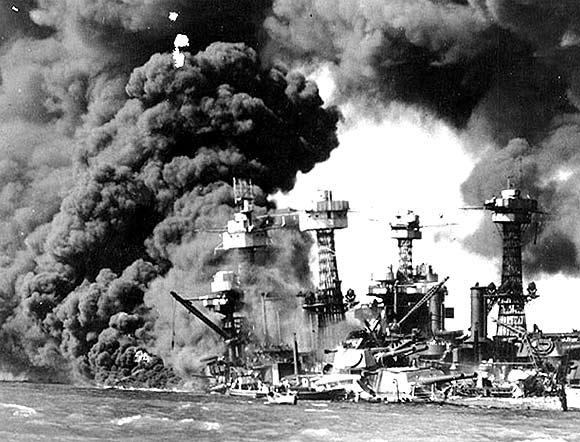

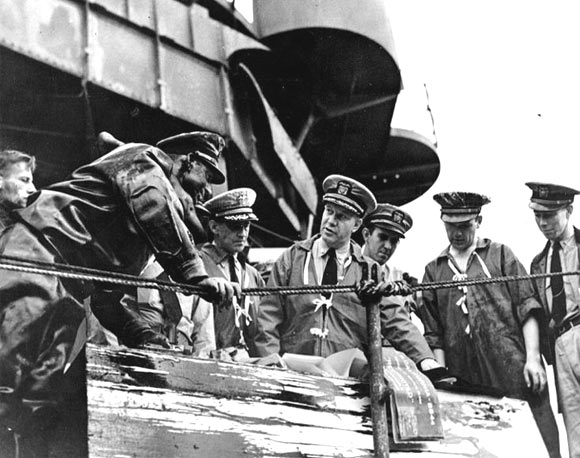

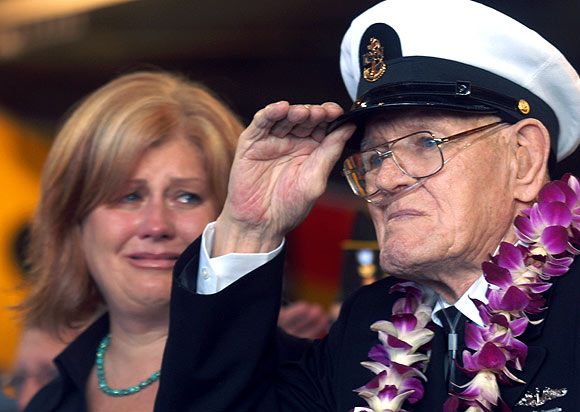

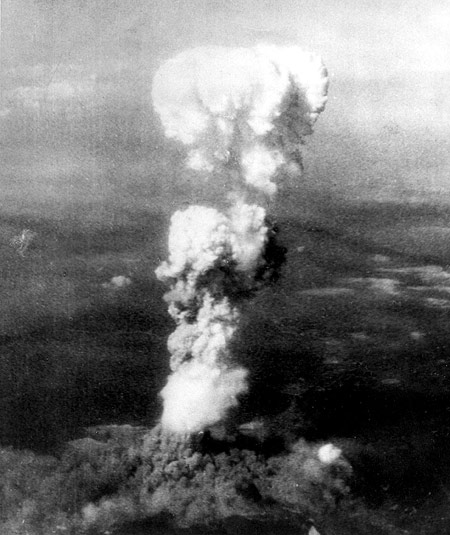


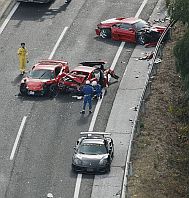
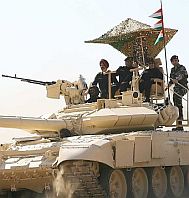

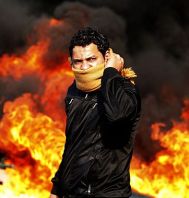
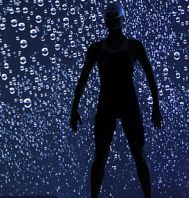
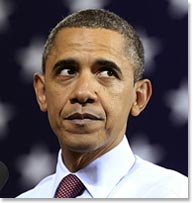
article